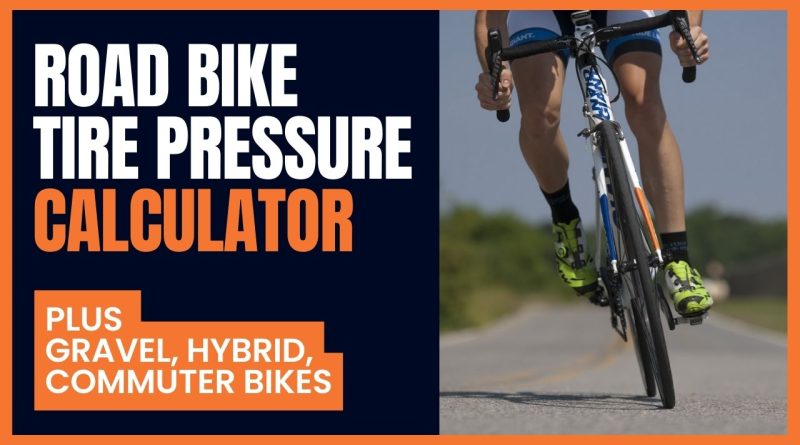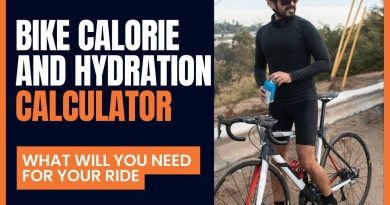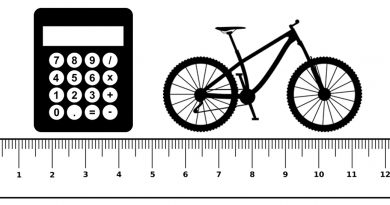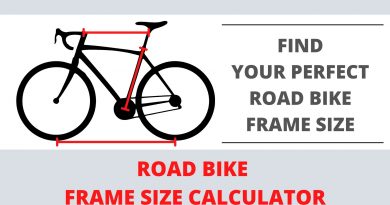Road Bike Tire Pressure Calculator (+ Hybrid, Commuter)
Use our Road Bike Tire Pressure Calculator to quickly and easily determine the optimal tire pressure for your specific bike type, rider weight, wheel size, and riding conditions. Stay comfortable and efficient on your rides by finding the perfect balance between grip, speed, and comfort.
Road Bike Tire Pressure Calculator
Front Tire Pressure:
Rear Tire Pressure:
Remember: Please note that the tire pressure recommendations provided by this calculator are for general guidance only and should only be used as a starting point. With tire pressure, there are many variables, so if you are not sure please check with a professional bike mechanic or check the manufacturer’s guidelines.
Also, factors such as rider skill, personal preferences, and specific tire models may influence the optimal tire pressure. Always consult your bike’s manual and tire manufacturer’s recommendations for any specific guidelines. Ride safely and remember to check your tire pressure regularly.
Other calculators:
- Gravel Bike Tyre Pressure Calculator
- Mountain Bike Tyre Pressure Calculator
- Crank Length Calculator
- Bike Saddle Height Calculator
The Ultimate Guide to Road Bike Tyre Pressure: All You Need to Know
The subtle hiss of air filling a bike tire often heralds the beginning of an exciting journey. Whether you’re heading out for a morning training ride, a weekend jaunt through the countryside, or gearing up for a race, tyre pressure can make or break your ride experience. Tyre pressure, that often overlooked detail, plays an integral role in bike performance, rider comfort, and safety.
A table of road bike tyre pressures (to help get you started)
Road Bike Tyre Pressure Guide (in PSI)
| Tyre Width | Rider Weight: 50-60 kg (110-132 lbs) | Rider Weight: 60-70 kg (132-154 lbs) | Rider Weight: 70-80 kg (154-176 lbs) | Rider Weight: 80-90 kg (176-198 lbs) | Rider Weight: 90-100 kg (198-220 lbs) | Rider Weight: >100 kg (>220 lbs) |
|---|---|---|---|---|---|---|
| 23mm | 90-95 PSI | 95-100 PSI | 100-105 PSI | 105-110 PSI | 110-115 PSI | 115-120 PSI |
| 25mm | 85-90 PSI | 90-95 PSI | 95-100 PSI | 100-105 PSI | 105-110 PSI | 110-115 PSI |
| 28mm | 80-85 PSI | 85-90 PSI | 90-95 PSI | 95-100 PSI | 100-105 PSI | 105-110 PSI |
| 32mm | 70-75 PSI | 75-80 PSI | 80-85 PSI | 85-90 PSI | 90-95 PSI | 95-100 PSI |
Please note:
- This table assumes you’re using clincher tyres with butyl inner tubes. Tubular tyres, tubeless setups, or latex tubes might require different pressures.
- Other factors like road conditions, weather, and personal comfort can influence the ideal tyre pressure.
- Always stay within the manufacturer’s recommended pressure range, which can be found on the sidewall of the tyre.
It’s advisable to use this table as a starting point and fine-tune the pressure based on your experiences on the road.
The Intricacies of Rolling and Resistance
Dive deep into the world of cycling science, and you’ll soon encounter the concept of rolling resistance. Every pedal you push confronts this force. As your tyre rolls, it deforms to the shape of the ground. On a microscopic level, this deformation occurs even on the smoothest of roads. The energy you expend during pedaling goes into overcoming this deformation, hence the term ‘rolling resistance.’
A tyre pumped to a higher pressure deforms less, reducing the area of the tire in contact with the ground, subsequently reducing rolling resistance. On smooth surfaces, this can lead to a swifter and more efficient ride. Conversely, a tyre with lower pressure has a larger contact area, which can offer better grip and shock absorption, particularly on uneven terrains.
From Rubber to Road: The Physics of Grip
A tyre’s contact with the ground isn’t just about resistance; it’s also about grip. When cycling, especially around curves or on wet roads, the grip is paramount. A tyre’s ability to hold onto the road can be the difference between a successful ride and an unfortunate spill.
The grip is influenced by the tyre’s tread, compound, and pressure. With a softer tyre (lower pressure), the contact patch increases, offering enhanced grip on rough or wet terrains. This attribute makes decreasing pressure advantageous in inclement conditions or over gravel.
Dissecting the Tyre: Beyond the Surface
While it may seem like a simple ring of rubber, a bike tyre is a marvel of engineering.
- Tread and Pattern: The outermost layer comes in various designs tailored for specific terrains and conditions. The pressure within can magnify or diminish how these treads interact with the ground, directly impacting grip, water dispersal, and overall performance.
- Sidewall: This vertical side of the tire can vary in flexibility. Some tyres boast reinforced sidewalls for durability, while others prioritize flexibility for a smoother ride.
- Bead: This crucial component keeps the tire anchored to the rim. Proper pressure ensures it remains seated, reducing any chance of the tire slipping off during a ride.
Beyond the Bike: External Elements
Several external factors can change the dynamics of tyre pressure:
- Weather: Apart from temperature fluctuations causing pressure variance, rainy conditions can make roads slippery, and a slightly lower tyre pressure can offer better traction.
- Altitude: Climbing a mountain pass or cycling in high-altitude areas can influence your tyre’s internal pressure. Though the change might be minimal, it’s a factor that competitive cyclists often consider.
Tailoring Pressure: Personalization and Performance
The ‘perfect’ tyre pressure doesn’t have a one-size-fits-all answer. It’s a blend of rider preference, external conditions, and the specific ride ahead. For instance:
- Rider Weight: Heavier riders might need slightly higher pressures to optimize performance and reduce the risk of flats.
- Ride Terrain: Smooth tarmac can tolerate higher pressures, while cobblestone streets or rough roads might call for a softer setup.
Advancements in Tyre Tech
As with every aspect of cycling, tire technology is rapidly evolving.
- Tubeless Systems: Gaining traction in the cycling community, these setups can often run at lower pressures, thanks to the absence of an inner tube, reducing pinch flat risks.
- Tyre Inserts: Initially adopted by mountain bikers, these foam rings placed inside tyres allow for lower pressures without risking rim damage.
Marrying Pressure and Bike Design
Even the bike’s design and geometry can play a role in optimal tyre pressure. Bikes designed for aggressive, race-forward positions might have different pressure needs than those designed for leisurely rides.
Predicting the Future of Pressure
In our tech-driven age, we’re on the brink of real-time pressure adjustments. Imagine tyres equipped with sensors that relay real-time data to a cyclist’s computer, providing instant feedback. Some speculate that in the future, micro pumps could auto-adjust tyre pressure mid-ride, optimizing performance on-the-fly.
Conclusion
Delving into tyre pressure illuminates the beautiful intricacies of cycling. It’s not just about pedaling and balance; it’s about understanding the delicate interplay between machine and environment. Every hiss of air, every adjustment, lays the foundation for a ride that’s not just efficient, but also safe and enjoyable. As with many aspects of cycling, tyre pressure management is a blend of science, art, and personal experience. And as you ride, remember: every journey starts with the right pressure.




